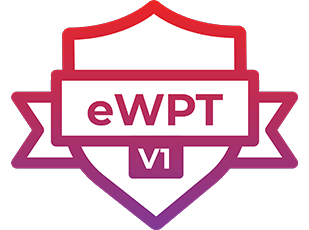Penetration Testing
Penetration testing is like a security health check for digital systems. It is a proactive way to find and fix vulnerabilities before cyber criminals can exploit them. In other words, penetration testing is like a simulated attack on your IT infrastructure, network or applications, carried out by ethical hackers who are experts at finding security vulnerabilities.

Who is it for?
Regular testing of IT infrastructure, network or applications is a necessity for companies of all sizes, regardless of their business. However, before penetration testing, it is wise to ensure the baseline security of systems and applications – once the baseline security is in place, the next logical step is penetration testing.
What problems or needs does it solve?
- Identifies weaknesses in IT infrastructure, network or applications that could be exploited by attackers.
- Helps to meet compliance requirements from known security standards.
- Provides reassurance that the security measures already in place are effective and can withstand real attacks.
- Helps to refine and test incident response plans by simulating different attack scenarios, which can highlight gaps in readiness and response capabilities.
- Independent penetration testing also helps to provide oversight for a company providing cyber security services.
Methodology and process
The methodology of the penetration testing is based on several well known and accepted frameworks: OWASP ASVS, OWASP Top 10, OWASP MASVS, OWASP WSTG (v4.2), OSSTMM, NIST, ISACA, etc.
Black box method – In this method, the attacker has no prior knowledge of the customer’s IT infrastructure or systems. White box method – This method allows the attacker to have prior knowledge and access to systems. Grey Box Approach – In this approach, the attacker has partial knowledge of the customer’s IT infrastructure or systems.
During the pre-engagement interaction phase, discussions are conducted between the penetration tester and the company undergoing the test to determine the scope and the required outcome of the penetration test. Since it is strongly recommended not to conduct penetration tests on active production environments, the company should let the tester know whether there are areas of the target scope that are sensitive in order to make sure risky attacks are avoided on these areas or to exclude these areas from testing completely.
In this phase, the penetration tester uses open source or proprietary sources of intelligence to gather information about the target scope that could be used to infer additional information to aid in the test, such as DNS records, search engine caches, external referrals etc.
In this phase, the penetration tester gathers as much information as possible about the targets and their functions using various tools such as fuzzers, vulnerability scanners, modified browsers, raw port communications and brute forcing tools, to identify the normal behaviour of the targets, and eventually to probe and figure out how they respond to unintended forms of interaction. The tests check security controls might be in place and what type of access might be expected in the eventuality of a successful breach.
Threat modelling uses the information acquired in the intelligence gathering phase to try and identify any existing vulnerabilities on a target system. When performing threat modelling, the penetration tester determines the most effective attack method, the type of information an attacker would go after, and how the organization might be attacked. Threat modelling is all about looking at the organization as a malicious attacker would and attempting to exploit those same weaknesses.
Having identified the most viable attack methods, the next consideration is how to access the target. During this phase, the combined information gathered from the previous phases is correlated to determine what attacks have the highest chance of success. Among other things, vulnerability analysis takes into account packets, service and directory enumeration, data gathered through enumeration techniques and information collected during intelligence gathering.
During the exploitation phase, different attacks are launched against the target system to try and successfully obtain access to it. Different types of systems and services are susceptible to different techniques; therefore, the penetration tester has to rely on his knowledge and various tools to determine which exploits are relevant and are most likely to succeed. There are hundreds of exploits, a good number of which are destructive, and may lead to system crashes and other undesirable behaviour.
After the attack phase, we will prepare a summary report highlighting all the weaknesses identified and suggestion how to fix them.
Why OIXIO Cyber?
- At least two experts per project to ensure better service quality and results. In addition, we will use a cross-checking method to identify if anything was missed during the testing. Thus, each test is carried out by a minimum of 3 technicians (2 testers and 1 reviewer).
- Attack scenarios tailored to each customer’s real needs and business specifics.
- Free retesting, for one year, after the weaknesses identified during the testing have been remedied.
- We understand the critical importance of privacy and confidentiality in our business. In order to maintain the highest standards of data protection, we have a strict policy in place to securely remove related content within 30 days of the completion of each penetration testing.
- We have a team of 8 experts with years of offensive security experience.
Our experience
Our team of experts have carried out penetration testing in several countries around the world, such as: Austria, Germany, Slovakia, Czech Republic, USA, Switzerland, Malta and Estonia. Our approach is rooted in deep technical expertise.
We are committed to educating our customers, demystifying the complexities of cyber security and providing clear insights into what each of our customers really needs.
Kuidas saame Sulle abiks olla? (OIXIO Cyber)
Võta ühendust, kui soovid suhelda eksperdiga.
"*" indicates required fields





